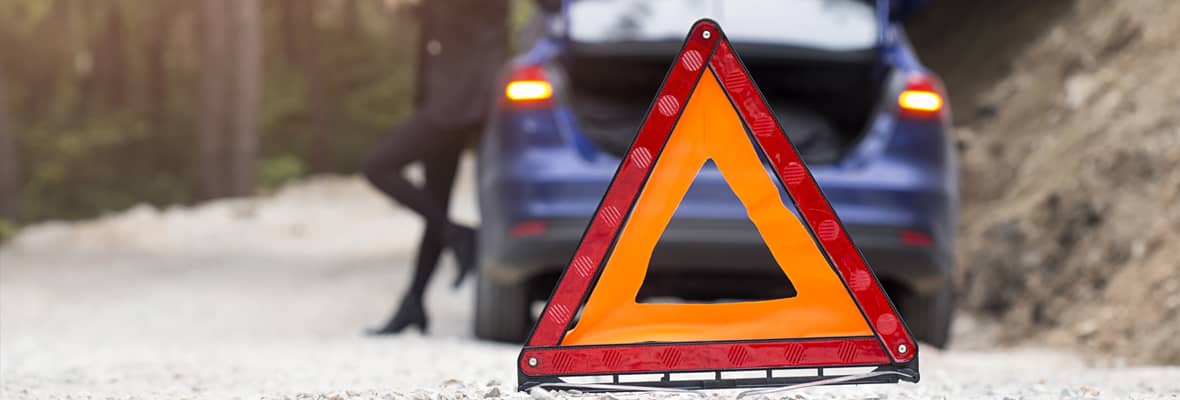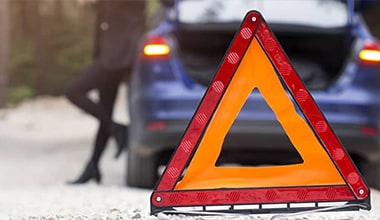Related articles
- How to change a car tyre
- Car maintenance and servicing checklists
- Broken Down Car? Here’s What To Do
- How to change a car battery
- Roadside assistance buying guide
- What to do if your car breaks down on a highway
- How to get your car unstuck from mud or sand
- Australia Day road trips survey 2021
- Best road trips Australia
- Roadside Assistance Survey and Statistics 2024
- Tips for maintaining your car while not in use
- Warning signs your car might break down soon
- How to check and add oil to your car
- Tyre health survey 2020
- How to get the ideal tyre pressure for your car
- How to transport your bike by car
- Common Roadside Callouts 2025
- Family Road Trips Survey and Statistics 2024
- Road Trip Planner Australia
- When should I get my brake pads replaced?
- How to Check Tyre Tread
- How Often Should You Get Your Car Serviced?
Driving in Australia can lead to all kinds of unexpected situations.
You can encounter roadworks, break down, get lost in strange neighbourhoods, have to change a flat tyre in the rain, and hit a kangaroo in the Outback.
Your ability to cope with these emergencies can depend on what you carry in your car.
Having the right car emergency kit in your vehicle can help you deal with the unexpected and stay safe.
While you may not need certain items in your kit for months or even years, you’ll at least feel better knowing they’re there.
Roadside assistance can also give you peace of mind—the knowledge that, if you break down on the side of the road, you can summon help with a simple phone call.
What are the most useful things to put in a car emergency kit? Here is a checklist:
#1. Car owner’s manual
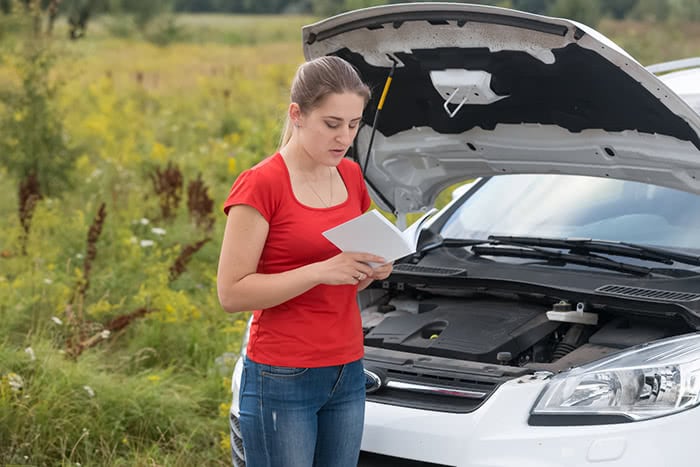
If you ever take the car manual out of your vehicle for any reason, make sure it goes back in the glove box or seat pocket when you’re done. If you’re out and about and need to know something technical about your car, this booklet will have the answers.
It includes tips and instructions on how to change fuses and light bulbs, top-up fluids, maintain correct tyre pressure and more, including details on what your warranty covers and how to troubleshoot common problems.
#2. Torch and spare batteries
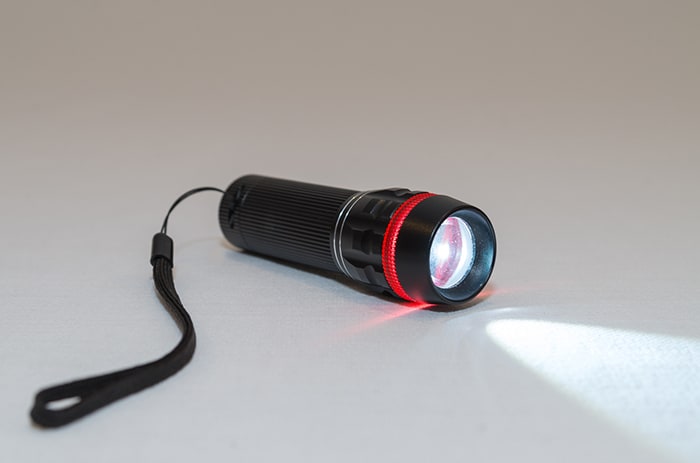
Always keep a decent torch in your car, along with some spare batteries. This can be handy at night if you get lost and need to stop and consult a map, or if you want to want to check under the bonnet in the dark.
If you’ve broken down on a dark road, a torch can help you signal oncoming motorists (hopefully this won’t be near Wolf Creek) to let them know you need assistance and alert them to possible danger (you should also have your hazard lights on).
#3. Spare tyre, jack, tyre lever, pump and tyre gauge
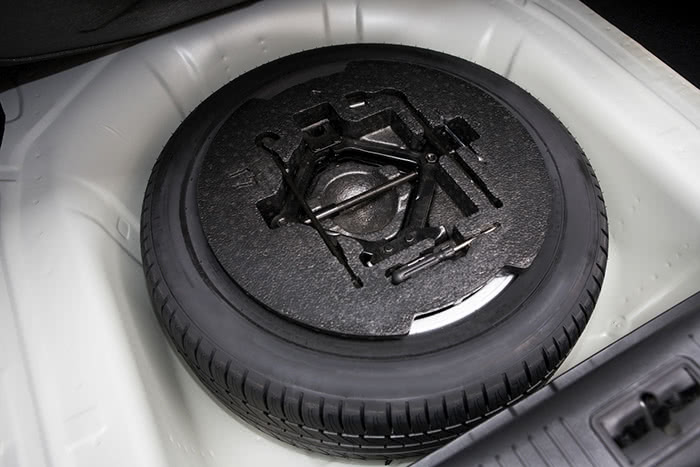
Keep a properly inflated spare tyre in your boot as well as a jack and wheel lever so you can change a flat tyre when needed. It also doesn’t hurt to bring along a flat piece of sturdy board to place under the jack stand for when the ground is boggy.
A brick is also useful for wedging under a wheel on the opposite side of the car to provide extra stability when changing a tyre.
There are an endless number of car tyre inflators on the market, from simple hand pumps to powered models. You should always have some portable method of pumping up tyres in your vehicle.
Carry a simple hand-held tyre gauge as well, so you can check pressures. Don’t solely rely on Roadside Assistance to change a flat tyre for you: this plan only works if you’ve remembered to charge your cell phone – and happen to have it with you when a tyre goes flat.
Read our guide to changing a car tyre.
#4. First-aid kit
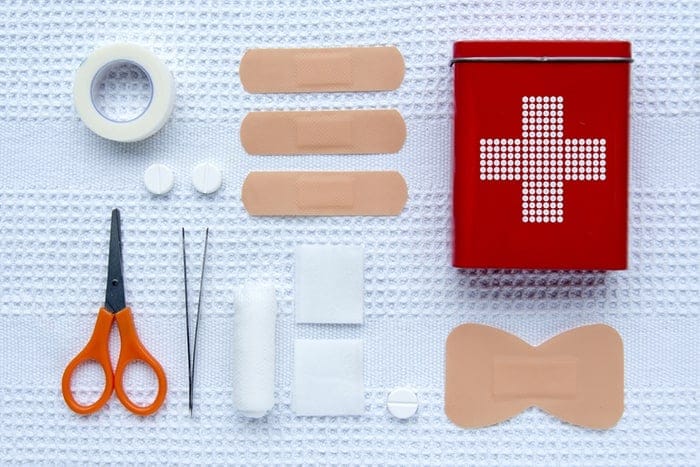
No one expects you to turn into an instant medical hero at a crash site, but having a basic first aid kit in your vehicle can be a big help to yourself and others if there’s a problem.
You can buy a pre-made motoring emergency first aid kit (St. John Ambulance sells a $35 Personal Motoring Kit that fits nicely in the glove box) or make one up yourself.
A first aid kit works best when you’ve had enough first aid training to know how to use it properly. If it’s been a long while since you underwent any first aid instruction, now might be a good time to think about a refresher course. You never know what type of emergency is just around the corner.
#5. High-vis safety vest
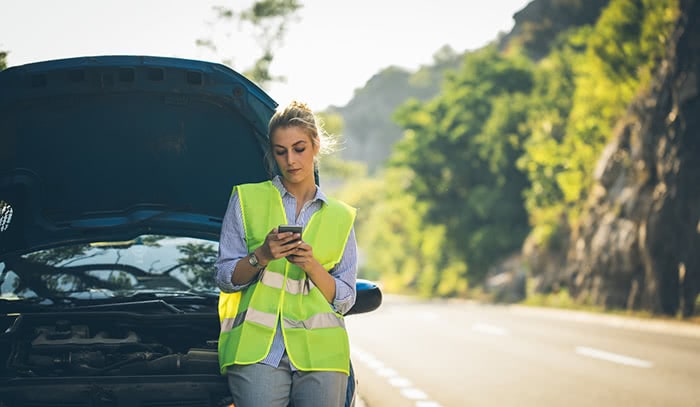
If your car breaks down and you need to get out of the vehicle for any reason, put on a reflective, high-visibility safety vest first. If there’s an accident, wearing a vest can substantially decrease the chances that you’ll get hit by oncoming traffic.
Road safety vests are cheap (around $15), lightweight and easy to store beneath your driver-side car seat. They’re a tiny investment that can save something a lot more valuable: your life.
#6. Blanket

Drowsiness and fatigue are undeniable factors in many Aussie road accidents. Sometimes the best solution is to find a safe place to pull over and take a nap until you’re refreshed enough to continue. A blanket will help. When you have children dozing in the back seat, a blanket will keep them more comfortable too.
If it’s a hot day and you’ve broken down but don’t want to sit in your oven-like vehicle, you can use a blanket to rig up some shade outside the car.
Blankets also help protect your car’s finish if you have to do some emergency work under the bonnet or find yourself changing a corrosive battery that might damage the paint. Accident victims that start to go into shock will also benefit from being kept warm with a blanket.
#7. Toilet paper
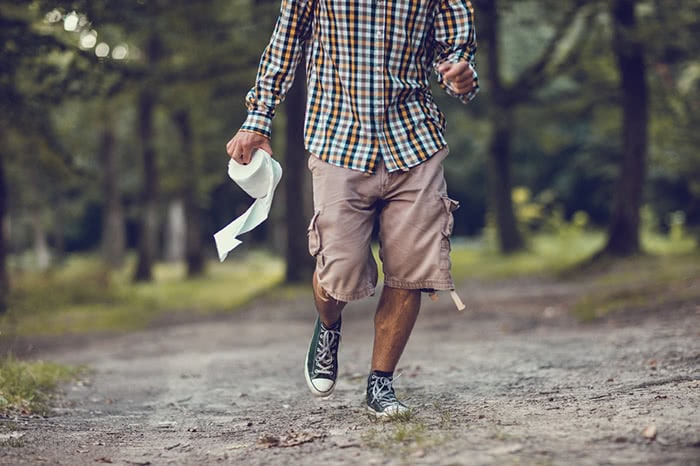
The human body is an amazing machine but what goes in must eventually come out – and sometimes the timing doesn’t run to schedule. Always carry a roll of toilet paper in the car.
Not only will it serve its intended purpose in an emergency, but it’s also handy for mopping up minor drink spills, dusting off dashboards and clearing condensation from the inside of foggy windows. Bring along some decent three-ply, not the cheap stuff.
#8. Water
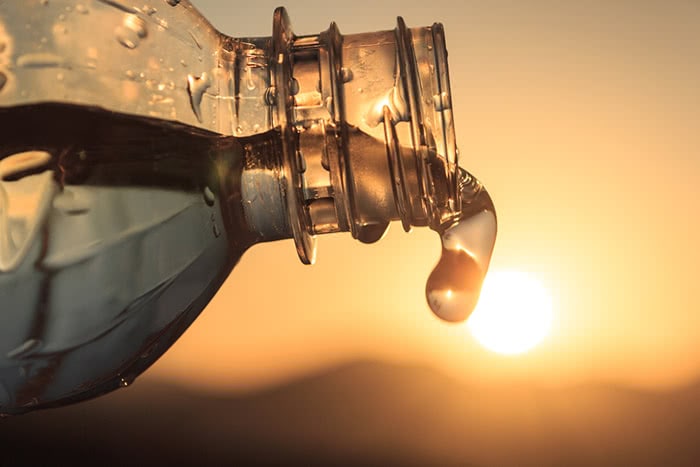
It’s amazing how many people carry no spare water in their cars. A 10-litre container is best but any amount is better than none. If you’re driving in the outback, you’ll need to carry even more.
Drinking water can literally be a life-saver if you break down in a remote area. Water is also useful for cleaning out wounds, topping up a thirsty radiator and for general cleaning duties in and around the vehicle (like when a fruit bat makes a ‘contribution’ to your bonnet and you want to clean it off immediately).
The hotter the driving conditions, the more water you should carry; don’t get caught out.
#9. Jumper leads
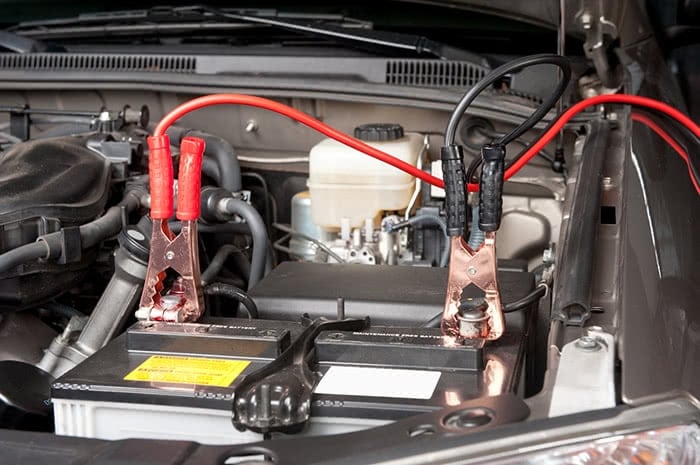
It’s not hard to drain a car battery. Leaving the lights on (external or internal) when the car isn’t running is a common culprit. In the absence of any emergency Roadside Assistance, one solution is to have a working vehicle help get your battery going with a jump-start.
Your car manual includes specific guidelines on how to safely perform a jump-start, so read it carefully. If you (or someone else) does it incorrectly, the potential damage to your vehicle can be quite serious and costly. Depending on the sort you buy, a set of jumper leads can cost you less than $40 or more than $200.
If your car’s battery is worn out, it’ll need to be replaced by a roadside contractor (if you’re stuck on the side of the road) or a car battery store (if your car’s still driveable).
Alternatively, if you’re up to it, you may decide to replace it yourself. Read our guide to replacing a car battery.
#10. Tool kit
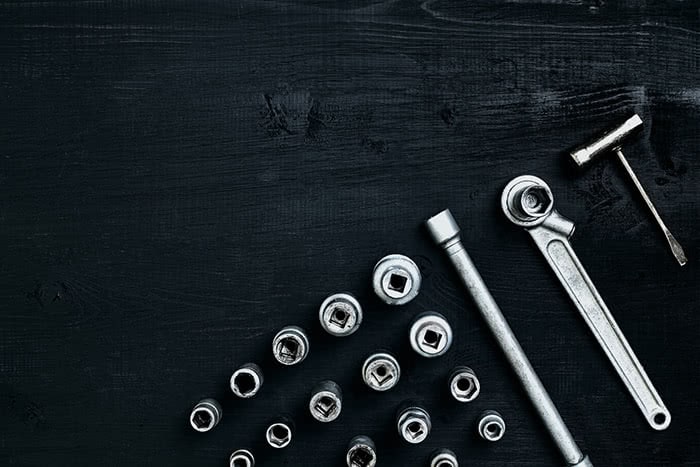
Whether you’re a tinkerer from way back or know nothing at all about cars, it’s inevitable that one day you’ll have to perform some basic maintenance chores. Your kit could include things like:
- Work gloves
- Vice grips
- Socket, spanner and shifter set
- Screwdriver with changeable bits
- Regular and needle-nose pliers
- Spark plugs
- Light globes and fuses
- WD40
- Electrical Tape
- Rags or an old towel
- Parachute cord or rope
- Extra fluids (small bottles of oil and coolant) for topping your vehicle
You can find ready-made emergency car tool kits at your local auto retailer. Keep at least two rags in your vehicle for dirty jobs, too; carry some hand degreaser so you can wash up after working on the car.
#11. Money
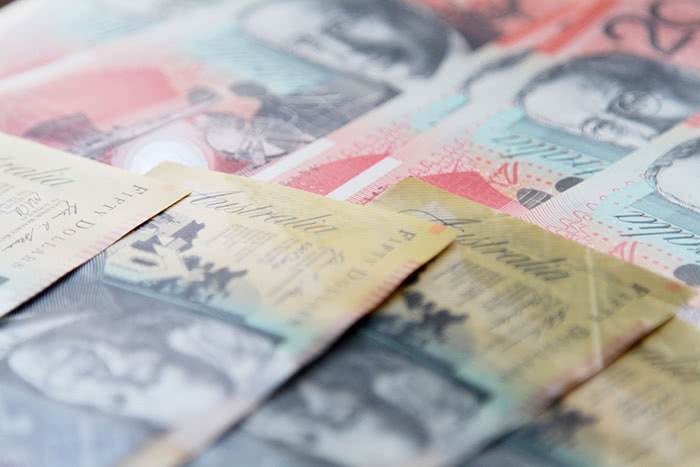
It’s not a bad idea to have a little emergency cash stored in your car. It should be extremely well hidden so as not to attract the attention of opportunistic thieves (a few coins left in the open is enough for some) and needn’t be more than $60 or $70.
This is enough to get a taxi somewhere if needed or pay for minor expenditures in an emergency. Out on the road, you can’t always access an ATM when you desperately need one.
#12. Fire extinguisher
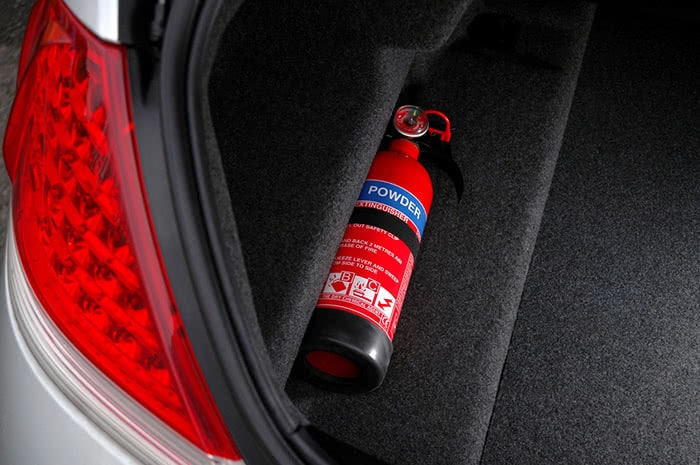
Your auto retail supplier will stock a compact fire extinguisher that’s suitable for use in vehicles. Make sure you invest in one.
#13. Lighter or matches
One of the first rules of survival – in any situation – is to have some method of making fire. Lighters don’t work too well if they get thoroughly soaked in the rain, so do your best to keep them dry. Waterproof matches are a better choice than normal matches because you can use them in any weather.
#14. Portable phone charger
If you have to make a call and your phone is dead, a portable phone charger can make all the difference. There’s nothing worse than being stranded somewhere with no means to communicate or get help.
#15. Contact details for getting assistance
Your emergency kit should include contact details for police, ambulance, fire, your insurer and anyone else who can provide help during or after a breakdown.
#16. Roadside assistance membership
You can get Budget Direct Roadside Assistance for just $89.95 per year — the equivalent of less than $1.75 a week.
With our network of 2,500 qualified contractors — including mobile mechanics, battery specialists, locksmiths, tow-truck operators, and tyre repairers — you’re never too far from help.
If you’re already a member and you’ve broken down and need help, please call 1800 514 448.
Related articles
- How to change a car tyre
- Car maintenance and servicing checklists
- Broken Down Car? Here’s What To Do
- How to change a car battery
- Roadside assistance buying guide
- What to do if your car breaks down on a highway
- How to get your car unstuck from mud or sand
- Australia Day road trips survey 2021
- Best road trips Australia
- Roadside Assistance Survey and Statistics 2024
- Tips for maintaining your car while not in use
- Warning signs your car might break down soon
- How to check and add oil to your car
- Tyre health survey 2020
- How to get the ideal tyre pressure for your car
- How to transport your bike by car
- Common Roadside Callouts 2025
- Family Road Trips Survey and Statistics 2024
- Road Trip Planner Australia
- When should I get my brake pads replaced?
- How to Check Tyre Tread
- How Often Should You Get Your Car Serviced?
